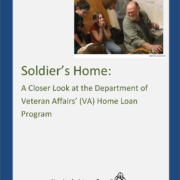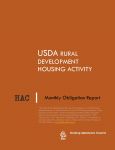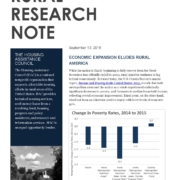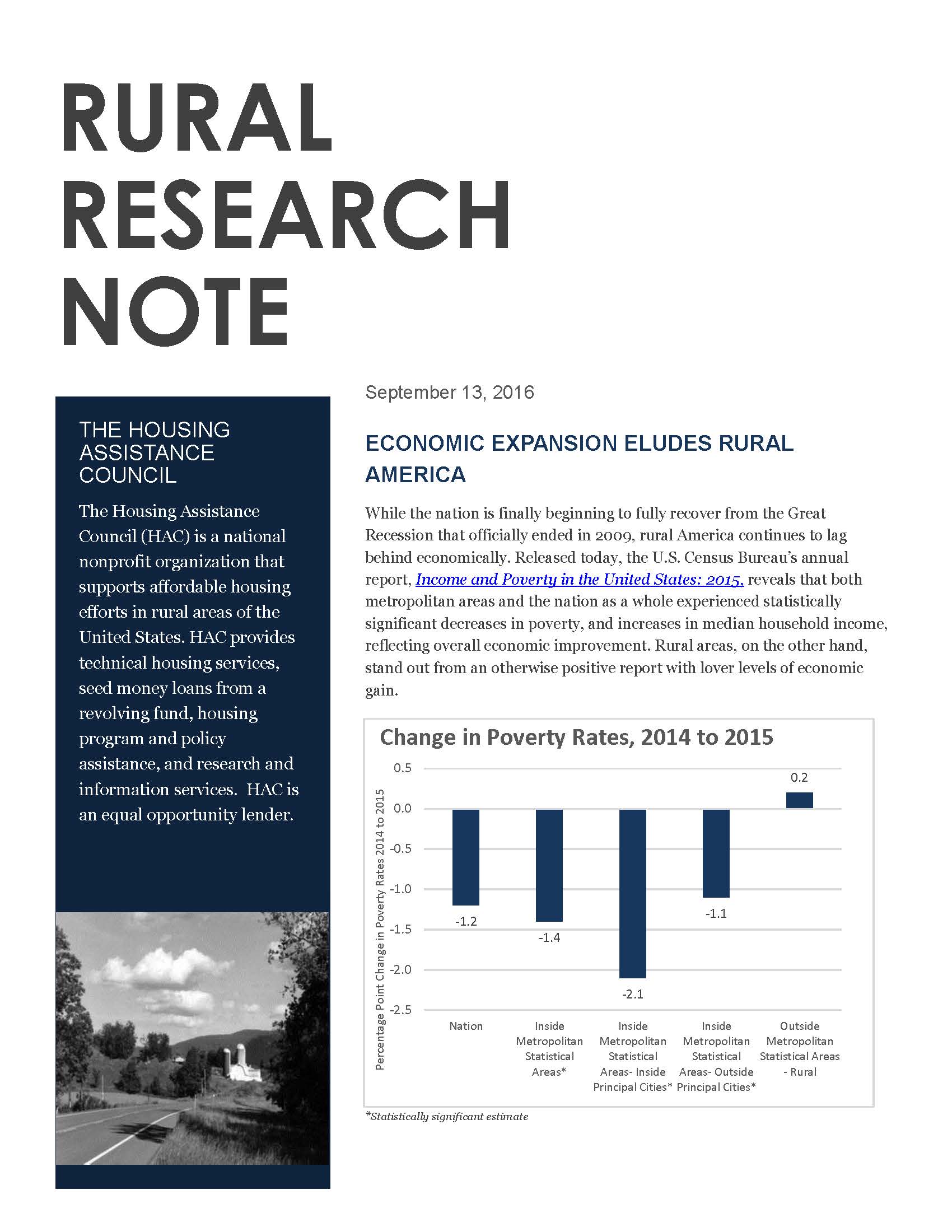HAC News: December 22, 2016
HAC News Formats. pdf
December 22, 2016
Vol. 45, No. 24
Federal funding set through April 28 • Duty to Serve final rule issued • Census Bureau releases new American Community Survey data for rural places • HUD updates housing counseling certification requirements • Broadband infrastructure mandated in HUD-funded multifamily properties • Public housing income limit comment deadline extended • Section 8 Annual Adjustment Factors announced for FY17 • Comments requested on community plans for QCTs • Section 538 guarantee program hits $1 billion mark • GAO recommends better documentation and policy for VA when selecting supportive housing • VA home loan program’s role growing, HAC finds • HAC awards recognize rural housing successes • Happy holidays
HAC News Formats. pdf
December 22, 2016
Vol. 45, No. 24
Federal funding set through April 28. A Continuing Resolution holds most government spending, including housing programs, at FY16 levels with a 0.19% across-the-board cut. (See HAC News, 12/8/16.)
Duty to Serve final rule issued. The Federal Housing Finance Agency has issued a final rule implementing the Duty to Serve provisions that require Fannie Mae and Freddie Mac to improve mortgage financing for affordable housing in three specified underserved markets – manufactured housing, affordable housing preservation, and rural housing. The final rule makes some important improvements related to rural housing recommended by HAC, including adopting a revised definition of “rural areas,” adding persistent poverty counties to the definition of “underserved areas,” and incentivizing small bank mortgage activity and use of Low Income Housing Tax Credits in rural areas. FHFA, Fannie Mae, and Freddie Mac will co-host a series of public listening sessions in January and February 2017, including a webinar on February 9. At these sessions stakeholders can make suggestions to Fannie Mae and Freddie Mac as they develop their Underserved Markets Plans describing activities they will undertake to meet their Duty to Serve obligations over a three-year period.
Census Bureau releases new American Community Survey data for rural places. Homeownership rates are higher in rural than urban areas (81.1% compared with 59.8%), more rural residents live in single-family homes (78.3% compared with 64.6%), rural median household income is lower ($52,386 compared with $54,296), rural median home value is lower ($151,300 compared with $190,900), and rural monthly mortgage costs are lower ($1,271 compared with $1,561). Veterans are 10.4% of rural adults and 7.8% of urban adults. Census-defined rural places are generally those with under 2,500 population. Data for individual places are available on the Census Bureau’s web site.
HUD updates housing counseling certification requirements. A final rule revises HUD’s provisions for certification of housing counselors and counseling agencies, and requires housing counseling under other HUD programs to be provided by HUD-approved agencies. HUD will issue a separate Federal Register notice to announce the start of the testing and certification process, and entities and individuals will have 36 months to be certified. For more information contact William McKee, HUD, housing.counseling@hud.gov.
Broadband infrastructure mandated in HUD-funded multifamily properties. HUD is now requiring installation of broadband infrastructure at the time of new construction or substantial rehabilitation of multifamily rental housing that is funded or supported by HUD (but not in properties with FHA-insured or HUD-guaranteed mortgages). Owners can request exemptions from the rule where the installation is too costly to provide due to location or building characteristics. The rule does not require providing broadband service to current or future residents even if residents pay for the service. Contacts vary by program and are listed in the notice.
Public housing income limit comment deadline extended. The December 29 deadline (see HAC News, 12/8/16) is extended to January 30. Contact HUD staff, HOTMAquestions@hud.gov.
Section 8 Annual Adjustment Factors announced for FY17. The AAFs are applied when Section 8 Housing Assistance Payments contracts are renewed. Contacts vary by program and are listed in the notice.
Comments requested on community plans for QCTs. IRS Notice 2016-77 explains that state Qualified Allocation Plans for Low Income Housing Tax Credit projects must include a preference for “projects which are located in qualified census tracts … and the development of which contributes to a concerted community revitalization plan.” It is considering providing guidance on what constitutes a concerted community revitalization plan and requests input by February 10. For more information, contact James W. Rider, IRS, 202-317-4137.
Section 538 guarantee program hits $1 billion mark. USDA’s Section 538 program guarantees loans for development and preservation of affordable rental properties in rural America.
GAO recommends better documentation and policy for VA when selecting supportive housing. Homeless Veterans: Management Improvements Could Help VA Better Identify Supportive-Housing Projects (GAO-17-101) reports that, for veterans who are homeless or at risk of homelessness, VA has developed 35 enhanced-use leases for supportive housing located on VA medical center campuses and is planning more. GAO’s recommendations focus on VA’s ability to identify viable projects. The report also examines how other VA programs and HUD-VASH vouchers help support the goal of ending veteran homelessness.
VA home loan program’s role growing, HAC finds. Soldier’s Home: A Closer Look at the Department of Veteran Affairs’ (VA) Home Loan Programprovides a descriptive analysis of the program between 2005 and 2014. It gives an overview of the VA loan program and its trends, borrowers, and lenders. VA loans represented approximately 9% of all mortgage lending activity in 2014, up from less than 2% in 2005. VA origination rates are consistently high for minority homebuyers, when compared to conventional home purchase loans. Private mortgage companies and large volume lenders play a big role in the market; program lender requirements may limit small lender involvement.
HAC awards recognize rural housing successes. On December 1 at the HAC 2016 Rural Housing Conference, Sen. Jeff Merkley (D-OR) received the Rep. Henry B. González Award for an elected official who has supported rural housing. The Clay Cochran/Art Collings Award, recognizing service to rural housing at the national level, went to USDA Under Secretary for Rural Development Lisa Mensah and Rural Housing Service Administrator Tony Hernandez. Four local rural housers were honored with the Skip Jason Community Service Award: Earl Howerton, Southside Outreach Group, Virginia; Lenora Jarvis-Mackey, River City Community Development Corporation, North Carolina; Earl Pfeiffer, Florida Home Partnership, Florida; and Kathy Tyler, MET, Texas.
Happy holidays! HAC’s board and staff wish peace, happiness, and affordable housing to all!




